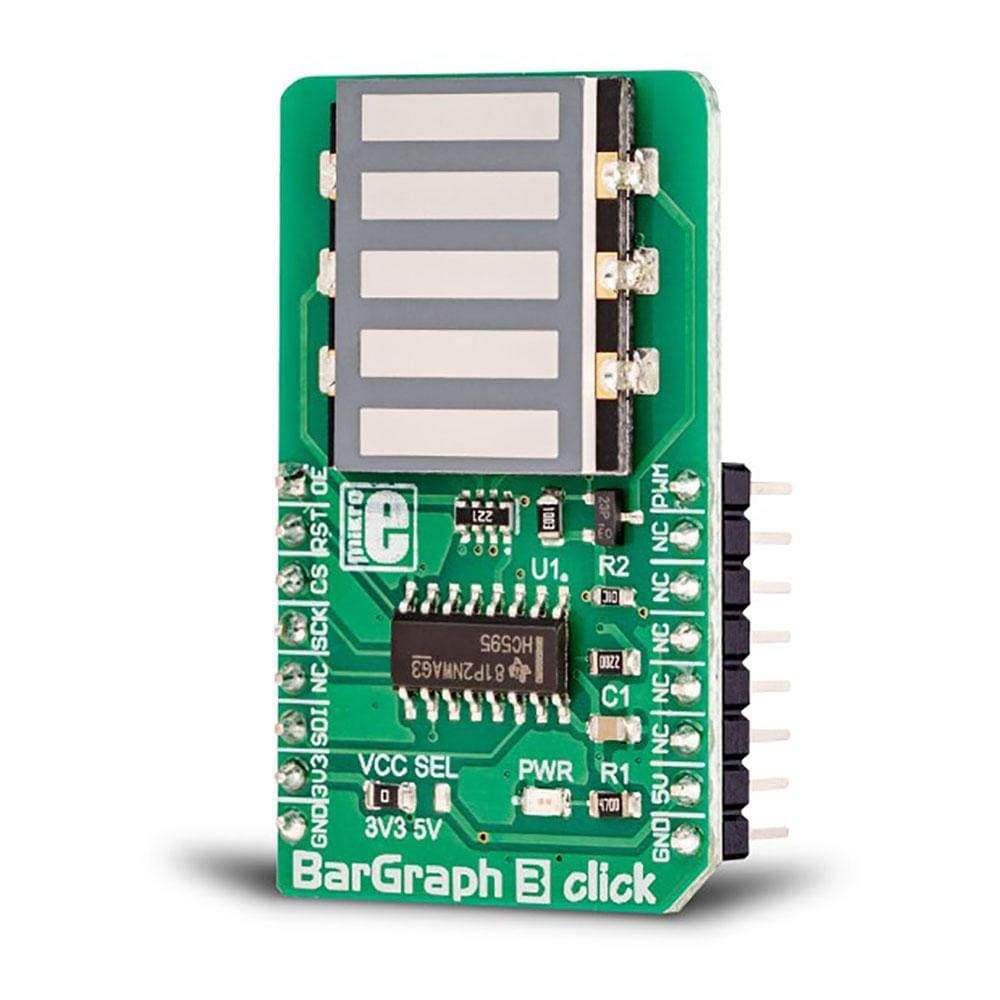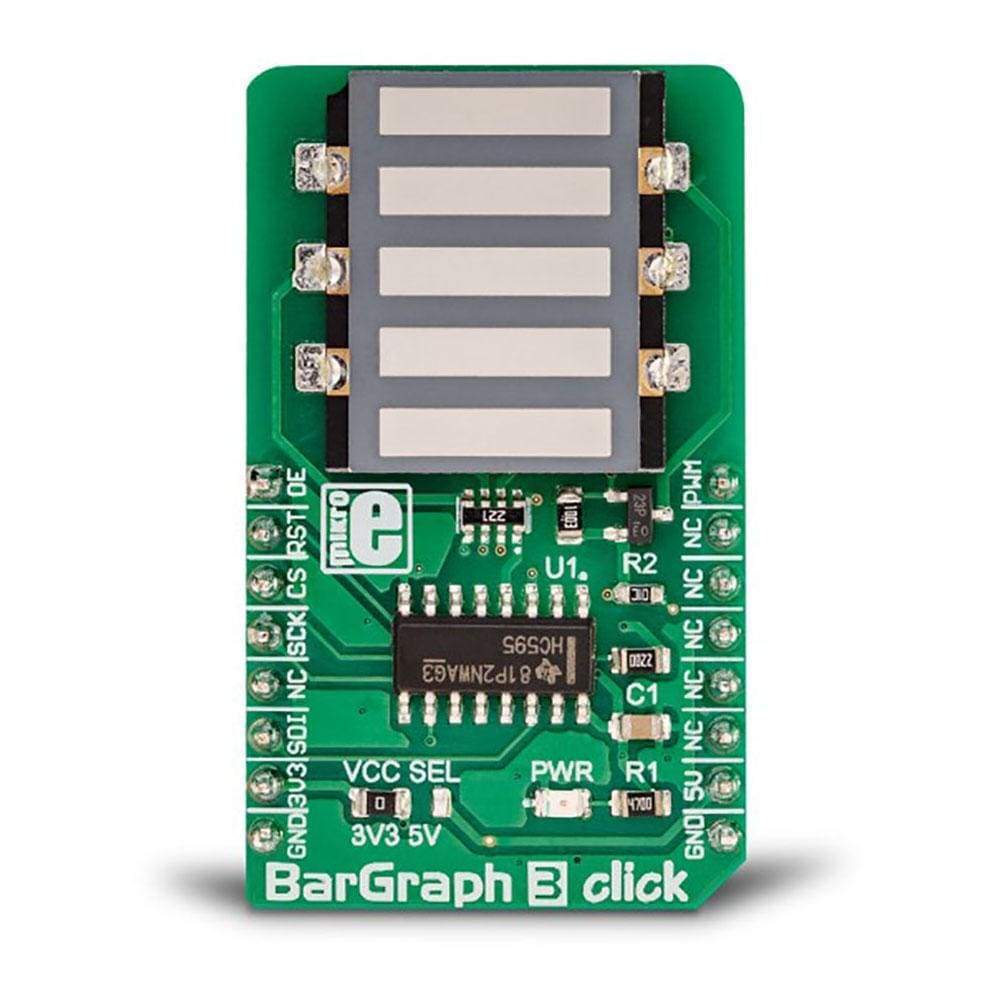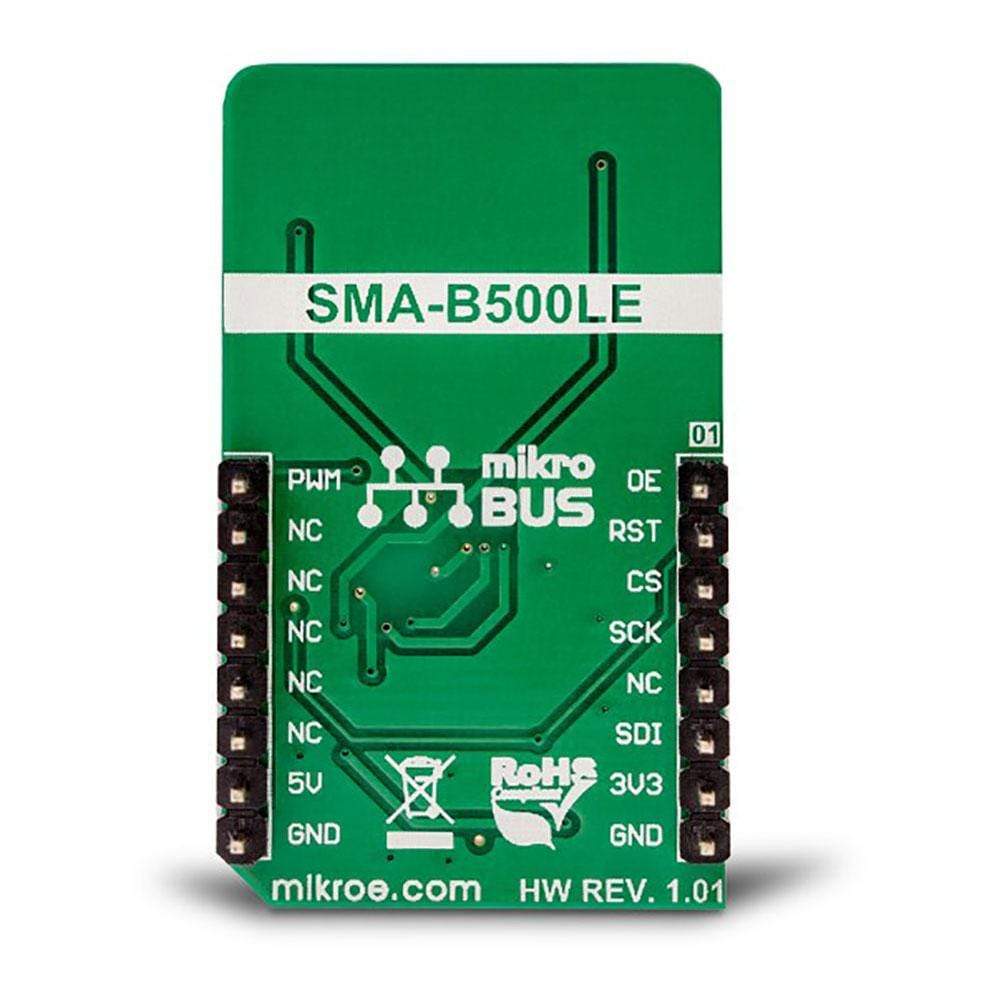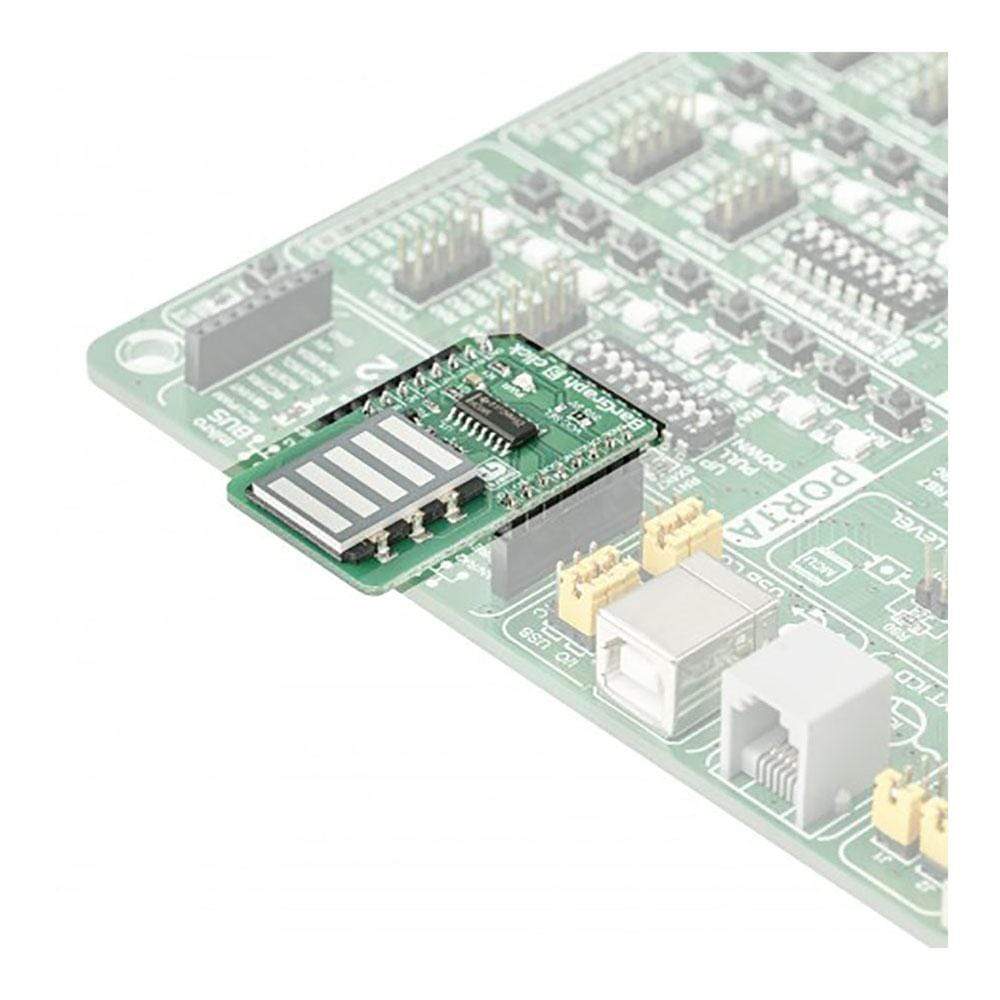



Overview
The BarGraph 3 Click Board™ is equipped with a five-segment LED bar graph display, notable for its strong and uniform illumination of the segments. Each segment consists of three internal LEDs with a common cathode, while the anodes of all LEDs are connected in a single point. This reduces the number of display bar pins to just six. The common anode is connected to the PWM pin of the mikroBUS via the P-type MOSFET, which can use the PWM signal from the microcontroller to change the intensity of the display. The fact that there are as many as three LEDs per segment makes the segments evenly illuminated, and the red colour of the light on the dark background makes segments visible.
It comes in a package with the mikroSDK software and a library with all the functions. The BarGraph 3 Click Board™ comes as a thoroughly tested and approved prototype, making it a reliable device ready to use on the development board.
Downloads
Le BarGraph 3 Click Board™ est équipé d'un affichage graphique à barres LED à cinq segments, qui se distingue par l'éclairage puissant et uniforme des segments. Chaque segment est composé de trois LED internes avec une cathode commune, tandis que les anodes de toutes les LED sont connectées en un seul point. Cela réduit le nombre de broches de la barre d'affichage à seulement six. L'anode commune est connectée à la broche PWM du mikroBUS via le MOSFET de type P, qui peut utiliser le signal PWM du microcontrôleur pour modifier l'intensité de l'affichage. Le fait qu'il y ait jusqu'à trois LED par segment permet d'éclairer les segments de manière uniforme, et la couleur rouge de la lumière sur le fond sombre rend les segments visibles.
Il est livré dans un package avec le logiciel mikroSDK et une bibliothèque avec toutes les fonctions. Le BarGraph 3 Click Board™ est livré sous la forme d'un prototype entièrement testé et approuvé, ce qui en fait un appareil fiable prêt à être utilisé sur la carte de développement.
| General Information | |
|---|---|
Part Number (SKU) |
MIKROE-3264
|
Manufacturer |
|
| Physical and Mechanical | |
Weight |
0.031 kg
|
| Other | |
Country of Origin |
|
HS Code Customs Tariff code
|
|
EAN |
8606018713967
|
Warranty |
|
Frequently Asked Questions
Have a Question?
Be the first to ask a question about this.




